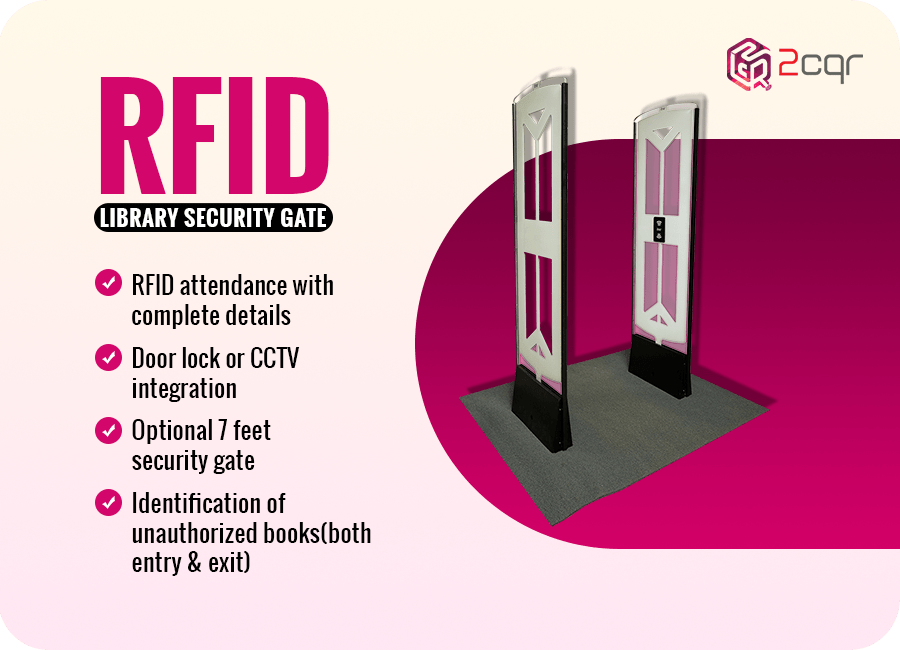
Despite the numerous benefits of adopting RFID technology in libraries, such as improved efficiency and streamlined operations, many institutions hesitate to embrace it due to perceived cost and security challenges associated with RFID tags in libaries.
However, with the right approach, these concerns can be addressed effectively. In this article, we will explore five simple strategies to maximise the potential of RFID tags in libraries to enhance their performance, minimize maintenance, and ensure security.
High-Quality RFID Tags:
Choosing high-quality RFID tags is crucial for optimal performance and durability even when longer read ranges are required.
Invest in reliable tags that can withstand the wear and tear of day-to-day library operations, ensuring longevity and minimising replacement costs.
High-quality tags offer better readability, reducing errors and improving overall efficiency.
Strategic Placement of Tags on Resources:
Proper placement of RFID tags on library resources is essential for efficient scanning, tracking and process various applications in library management efficiently.
Follow best practices recommended by expert RFID suppliers to ensure accurate detection and easy accessibility.
Consider factors such as tag orientation, distance from edges, and placement location to maximise the readability and effectiveness of the tags.
Regular Tag Testing:
To prevent any disruptions in library operations, it is crucial to implement a routine tag testing process. This involves periodically assessing the functionality of RFID tags to identify and replace any faulty or weak tags.
By proactively addressing potential issues, libraries can ensure smooth operations and accurate tracking of resources.
Regular tag testing also helps maintain data integrity and improves overall system performance.
Effective Staff Training:
Providing comprehensive training to library staff on RFID technology is essential for the resources to understand the technology and execute library management effectively.
Staff members should be well-versed in proper handling techniques and troubleshooting procedures. By investing in staff training, libraries can empower their employees to address minor issues promptly, reducing downtime and enhancing the performance of the RFID system.
Staff training also promotes better user experiences for library patrons.
Stay Updated with Software:
Keeping the RFID software up to date is crucial for optimal system performance. Regular updates ensure compatibility, functionality improvements, and enhanced security. It is important to stay informed about the latest advancements and patches released by the RFID software provider.
By staying up to date with software updates, libraries can take advantage of new features and improvements, ultimately improving the overall performance and reliability of the RFID system.
Compliance with Security Standards:
When selecting RFID suppliers, prioritise those who comply with industry-standard security protocols in designing RFID systems.
Look for vendors who are implementing the established encryption and authentication standards, ensuring the confidentiality and integrity of data stored on the RFID tags.
This step mitigates the risk of unauthorised access or tampering.
Avoid Programming Personalized Information:
To maintain data security, it is advisable to avoid programming personalized or sensitive information directly onto the RFID tags.
Instead, link the tags to the library’s database, which can securely store and manage such information. By separating sensitive data from the tags themselves, the risk of unauthorised access or information leakage is significantly reduced.
Limited Access to Authorized Personnel:
To enhance security, limit the access to RFID tag data to authorised personnel only. Implement strict authentication and access control measures to make sure that only authorised individuals can read or write data on the tags.
This helps prevent unauthorised modifications or tampering, enhancing the integrity and security of the entire library’s RFID system.
Conclusion:
Embracing RFID technology in libraries can revolutionise operations, improving efficiency, accuracy, and security.
Despite initial concerns about cost and security, implementing RFID tags with the right strategies can mitigate these challenges effectively.


